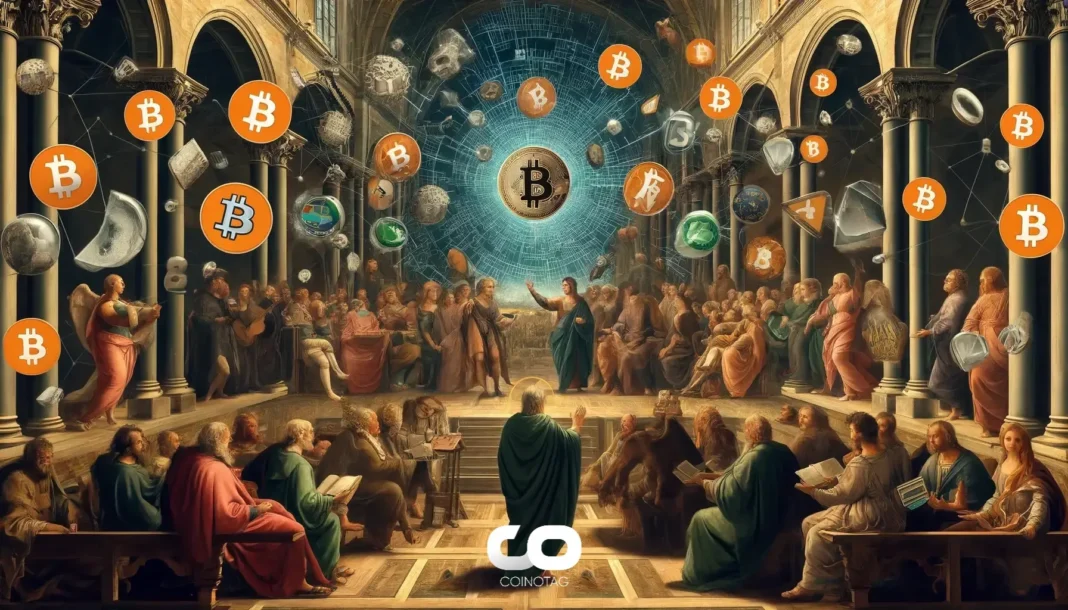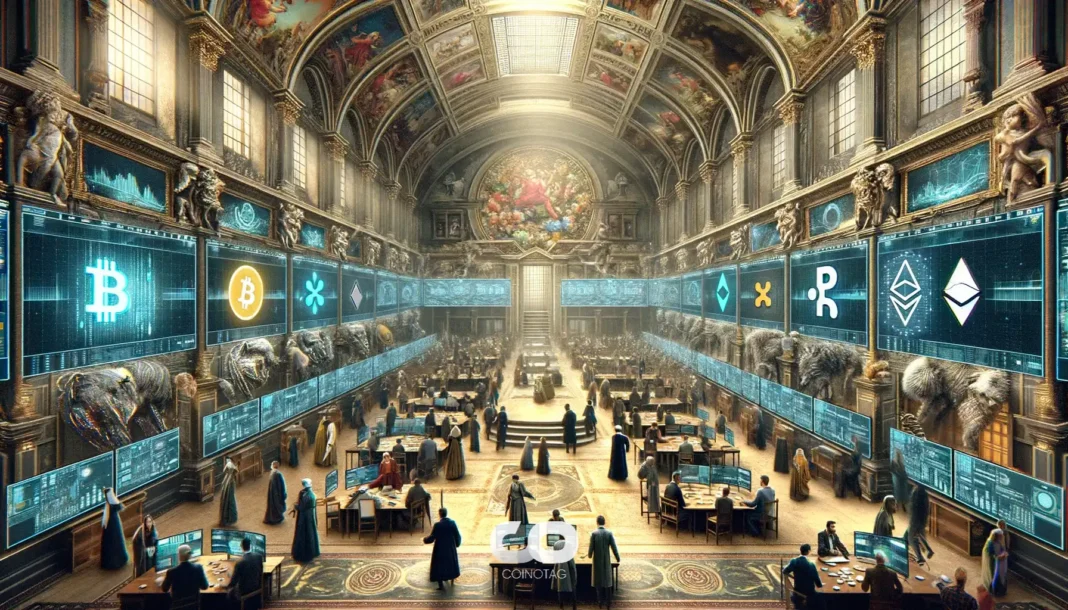| COINOTAG recommends • Exchange signup |
| 💹 Trade with pro tools |
| Fast execution, robust charts, clean risk controls. |
| 👉 Open account → |
| COINOTAG recommends • Exchange signup |
| 🚀 Smooth orders, clear control |
| Advanced order types and market depth in one view. |
| 👉 Create account → |
| COINOTAG recommends • Exchange signup |
| 📈 Clarity in volatile markets |
| Plan entries & exits, manage positions with discipline. |
| 👉 Sign up → |
| COINOTAG recommends • Exchange signup |
| ⚡ Speed, depth, reliability |
| Execute confidently when timing matters. |
| 👉 Open account → |
| COINOTAG recommends • Exchange signup |
| 🧭 A focused workflow for traders |
| Alerts, watchlists, and a repeatable process. |
| 👉 Get started → |
| COINOTAG recommends • Exchange signup |
| ✅ Data‑driven decisions |
| Focus on process—not noise. |
| 👉 Sign up → |
Pi Network is not listed on Binance due to its centralized governance, slow mainnet rollout, and a lack of real-world utility for its token.
-
Centralized Governance: Key decisions are made by the Pi Core Team, hindering decentralization.
-
Slow Mainnet Rollout: Many activities still occur on the Testnet, delaying full network functionality.
-
Utility Gaps: Lack of spendable Pi and essential features limits adoption.
Discover why Pi Network isn’t listed on Binance and what challenges it faces in achieving this goal. Learn about governance, mainnet issues, and utility gaps.
| COINOTAG recommends • Professional traders group |
| 💎 Join a professional trading community |
| Work with senior traders, research‑backed setups, and risk‑first frameworks. |
| 👉 Join the group → |
| COINOTAG recommends • Professional traders group |
| 📊 Transparent performance, real process |
| Spot strategies with documented months of triple‑digit runs during strong trends; futures plans use defined R:R and sizing. |
| 👉 Get access → |
| COINOTAG recommends • Professional traders group |
| 🧭 Research → Plan → Execute |
| Daily levels, watchlists, and post‑trade reviews to build consistency. |
| 👉 Join now → |
| COINOTAG recommends • Professional traders group |
| 🛡️ Risk comes first |
| Sizing methods, invalidation rules, and R‑multiples baked into every plan. |
| 👉 Start today → |
| COINOTAG recommends • Professional traders group |
| 🧠 Learn the “why” behind each trade |
| Live breakdowns, playbooks, and framework‑first education. |
| 👉 Join the group → |
| COINOTAG recommends • Professional traders group |
| 🚀 Insider • APEX • INNER CIRCLE |
| Choose the depth you need—tools, coaching, and member rooms. |
| 👉 Explore tiers → |
| Challenges |
Impact |
Current Status |
| Centralized Governance |
Limits trust and decentralization |
Decisions made by Pi Core Team |
| Slow Mainnet Rollout |
Delays full network functionality |
Still largely on Testnet |
| Utility Gaps |
Reduces adoption rates |
Key features unavailable |
What is the Pi Network and Why Isn’t It Listed on Binance?
The Pi Network is a cryptocurrency project that aims to make mining accessible to everyone. However, it remains unlisted on Binance due to issues like centralized governance, slow mainnet rollout, and a lack of utility for its token.
| COINOTAG recommends • Exchange signup |
| 📈 Clear interface, precise orders |
| Sharp entries & exits with actionable alerts. |
| 👉 Create free account → |
| COINOTAG recommends • Exchange signup |
| 🧠 Smarter tools. Better decisions. |
| Depth analytics and risk features in one view. |
| 👉 Sign up → |
| COINOTAG recommends • Exchange signup |
| 🎯 Take control of entries & exits |
| Set alerts, define stops, execute consistently. |
| 👉 Open account → |
| COINOTAG recommends • Exchange signup |
| 🛠️ From idea to execution |
| Turn setups into plans with practical order types. |
| 👉 Join now → |
| COINOTAG recommends • Exchange signup |
| 📋 Trade your plan |
| Watchlists and routing that support focus. |
| 👉 Get started → |
| COINOTAG recommends • Exchange signup |
| 📊 Precision without the noise |
| Data‑first workflows for active traders. |
| 👉 Sign up → |
Why is Governance a Challenge for Pi Network?
Despite its community-driven vision, Pi Network’s governance is still centralized, with key decisions made by the Pi Core Team. This centralization is a significant barrier for major exchanges like Binance, which prefer decentralized governance structures.
How is the Mainnet Rollout Progressing?
The mainnet rollout of Pi Network has been slow, with much of the activity still occurring on the Testnet. The Pi Core Team has urged users to complete KYC verification to expedite the migration, but progress has been less than satisfactory, leaving the network looking incomplete.
| COINOTAG recommends • Traders club |
| ⚡ Futures with discipline |
| Defined R:R, pre‑set invalidation, execution checklists. |
| 👉 Join the club → |
| COINOTAG recommends • Traders club |
| 🎯 Spot strategies that compound |
| Momentum & accumulation frameworks managed with clear risk. |
| 👉 Get access → |
| COINOTAG recommends • Traders club |
| 🏛️ APEX tier for serious traders |
| Deep dives, analyst Q&A, and accountability sprints. |
| 👉 Explore APEX → |
| COINOTAG recommends • Traders club |
| 📈 Real‑time market structure |
| Key levels, liquidity zones, and actionable context. |
| 👉 Join now → |
| COINOTAG recommends • Traders club |
| 🔔 Smart alerts, not noise |
| Context‑rich notifications tied to plans and risk—never hype. |
| 👉 Get access → |
| COINOTAG recommends • Traders club |
| 🤝 Peer review & coaching |
| Hands‑on feedback that sharpens execution and risk control. |
| 👉 Join the club → |
What Utility Gaps Exist for Pi Network?
Many features that could enhance real-world utility, such as validator payouts and ecosystem rewards, are currently unavailable. This lack of spendable Pi limits user adoption and engagement, further complicating the path to a Binance listing.
Frequently Asked Questions
What are the main challenges facing Pi Network?
The main challenges include centralized governance, slow mainnet migration, and gaps in real-world utility, which hinder its adoption.
How can Pi Network improve its chances for a Binance listing?
To improve its chances, Pi Network needs to decentralize governance, complete its mainnet rollout, and enhance the utility of its token.
| COINOTAG recommends • Exchange signup |
| 📈 Clear control for futures |
| Sizing, stops, and scenario planning tools. |
| 👉 Open futures account → |
| COINOTAG recommends • Exchange signup |
| 🧩 Structure your futures trades |
| Define entries & exits with advanced orders. |
| 👉 Sign up → |
| COINOTAG recommends • Exchange signup |
| 🛡️ Control volatility |
| Automate alerts and manage positions with discipline. |
| 👉 Get started → |
| COINOTAG recommends • Exchange signup |
| ⚙️ Execution you can rely on |
| Fast routing and meaningful depth insights. |
| 👉 Create account → |
| COINOTAG recommends • Exchange signup |
| 📒 Plan. Execute. Review. |
| Frameworks for consistent decision‑making. |
| 👉 Join now → |
| COINOTAG recommends • Exchange signup |
| 🧩 Choose clarity over complexity |
| Actionable, pro‑grade tools—no fluff. |
| 👉 Open account → |
Key Takeaways
- Centralization is a Barrier: Pi Network’s governance structure needs to change for a Binance listing.
- Mainnet Migration is Crucial: Completing the mainnet rollout is essential for credibility.
- Utility Must Improve: Real-world applications for the token are necessary to drive adoption.
Conclusion
In summary, Pi Network faces significant challenges that prevent its listing on Binance. Addressing governance issues, expediting the mainnet rollout, and enhancing token utility are critical steps for the project to gain traction in the competitive crypto market.
| COINOTAG recommends • Members‑only research |
| 📌 Curated setups, clearly explained |
| Entry, invalidation, targets, and R:R defined before execution. |
| 👉 Get access → |
| COINOTAG recommends • Members‑only research |
| 🧠 Data‑led decision making |
| Technical + flow + context synthesized into actionable plans. |
| 👉 Join now → |
| COINOTAG recommends • Members‑only research |
| 🧱 Consistency over hype |
| Repeatable rules, realistic expectations, and a calmer mindset. |
| 👉 Get access → |
| COINOTAG recommends • Members‑only research |
| 🕒 Patience is an edge |
| Wait for confirmation and manage risk with checklists. |
| 👉 Join now → |
| COINOTAG recommends • Members‑only research |
| 💼 Professional mentorship |
| Guidance from seasoned traders and structured feedback loops. |
| 👉 Get access → |
| COINOTAG recommends • Members‑only research |
| 🧮 Track • Review • Improve |
| Documented PnL tracking and post‑mortems to accelerate learning. |
| 👉 Join now → |
| COINOTAG recommends • Members‑only research |
| 📌 Curated setups, clearly explained |
| Entry, invalidation, targets, and R:R defined before execution. |
| 👉 Get access → |
| COINOTAG recommends • Members‑only research |
| 🧠 Data‑led decision making |
| Technical + flow + context synthesized into actionable plans. |
| 👉 Join now → |
| COINOTAG recommends • Members‑only research |
| 🧱 Consistency over hype |
| Repeatable rules, realistic expectations, and a calmer mindset. |
| 👉 Get access → |
| COINOTAG recommends • Members‑only research |
| 🕒 Patience is an edge |
| Wait for confirmation and manage risk with checklists. |
| 👉 Join now → |
| COINOTAG recommends • Members‑only research |
| 💼 Professional mentorship |
| Guidance from seasoned traders and structured feedback loops. |
| 👉 Get access → |
| COINOTAG recommends • Members‑only research |
| 🧮 Track • Review • Improve |
| Documented PnL tracking and post‑mortems to accelerate learning. |
| 👉 Join now → |







